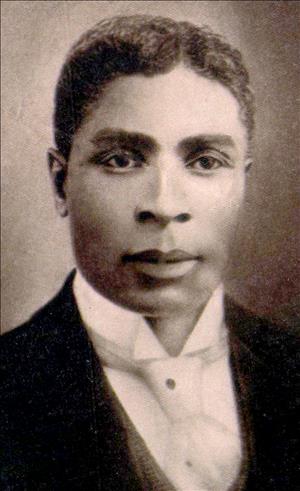John T. Gayton, one of Seattle's earliest Black residents, a community leader, and patriarch of one of the city's most outstanding black families, came to Seattle in 1889. He retired as U.S. District Court Librarian in 1953, after 20 years of service.
From the South
John T. Gayton was born in Benton, Mississippi, in 1866, to former slaves. With little formal education, he moved to Yazoo City, Mississippi, and made the fortuitous decision to work for a physician, Dr. Henry Yandell (1835-1916), as servant and coachman. It brought him to Seattle when Dr. Yandell, a Confederate veteran, joined the movement to the new state. A young and enthusiastic 21-year-old in a new and growing community, Gayton continued to work for Dr. Yandell, who began a medical practice in the Colman Building. But Gayton yearned for a more satisfying occupation.
After leaving the doctor’s employ, he tried his hand as a painter, a painting contractor, barber, and bellboy. He worked as a waiter at the Arctic Club and later at the Rainier Club where he was promoted to headwaiter. In 1901, he became the first Black steward at the Rainier Club, overseeing the servants and the preparation of food. Before long, he was called upon to cater large parties and banquets. He also catered every day for a downtown restaurant.
Continuing Education
Feeling the need for further education and somehow finding the time, he studied bookkeeping at Wilson’s Modern Business School while working as a waiter, and he studied law while working as a steward. He never took the bar examination, but his background eventually served him well, for in 1904 he began working for the new U.S. District Court as messenger and bailiff. In August 1933, President Franklin D. Roosevelt appointed him U.S. District Court Librarian. Because of Gayton’s broad experience with the court system and his knowledge of the library, lawyers often called upon him for advice, as did immigrants seeking help in studying for citizenship exams. Gayton served in this position for 20 years.
His dress was invariably stylish and distinguished. He wore a dark suit with a bow tie, a flower in the lapel, and pince nez eyeglasses. He carried a different cane for every suit.
Family Life
Gayton married Magnolia Scott (1880-1954), a young mulatto woman who had moved to Seattle from Nashville, Tennessee, with Reverend and Mrs. Scott, her white adoptive parents. Magnolia Gayton, known to her friends as Maggie, was a meticulous housekeeper and an outstanding cook. The couple built a home at 432 N 26th Street and raised four children (John Jacob, Louise, James, and Leonard), providing them with a Christian background, a respect for education, and sense of pride in their heritage.
Their home became a gathering place for family members and visitors on weekends, with bridge games in the parlor and dancing in the basement where John Gayton led the quadrille. The pages of the Seattle Republican included frequent mention of the Gayton’s social activities. The Gaytons were a musical family, and they often sang church songs and popular songs around the piano as he played. They both sang in the choir at the First African Methodist Episcopal Church, of which they were founding members.
For several years after 1911, the family lived in a home on five acres in Hazelwood, a small community on the east side of Lake Washington. Here Mrs. Gayton had a vegetable and flower garden. Her children remembered rushing home from school on Fridays, her baking days, to freshly baked bread and cinnamon rolls. Mr. Gayton and the older children commuted to work and school by ferry and the interurban. Friends still came on weekends from across the lake for picnics and croquet, and for Mrs. Gayton’s good food.
Magnolia and John Gayton died in 1954 within months of each other.

